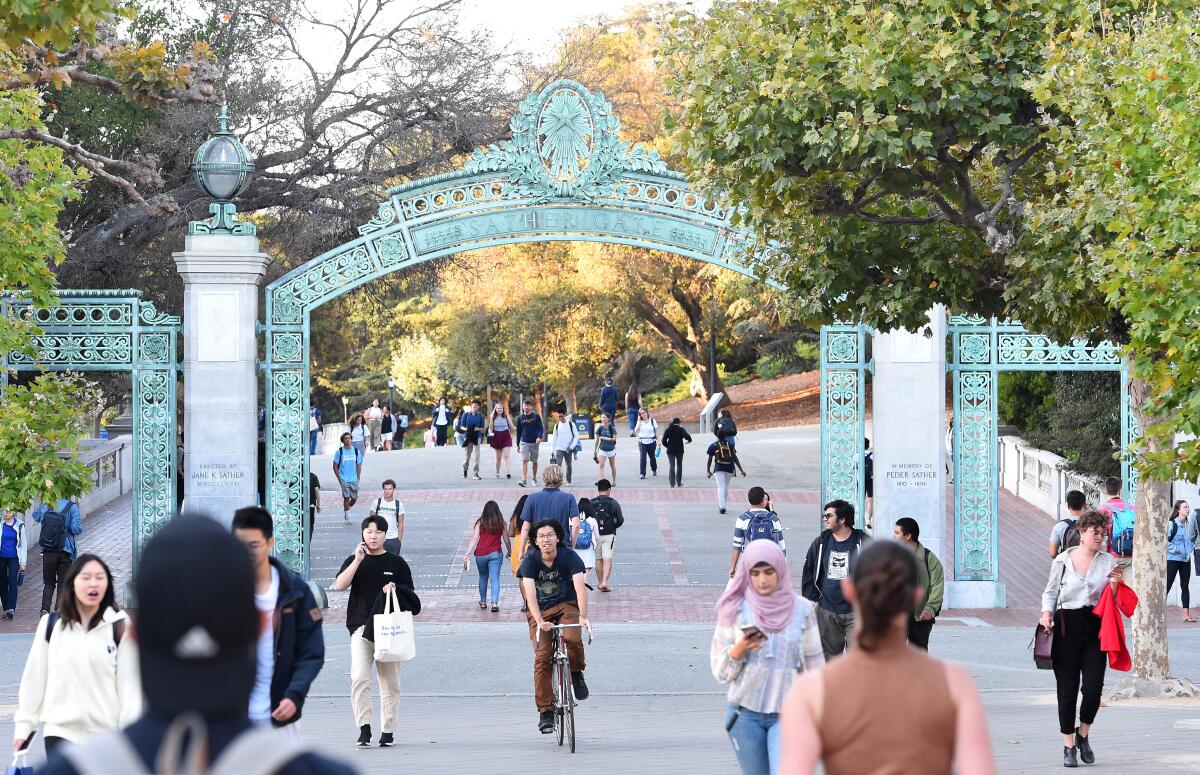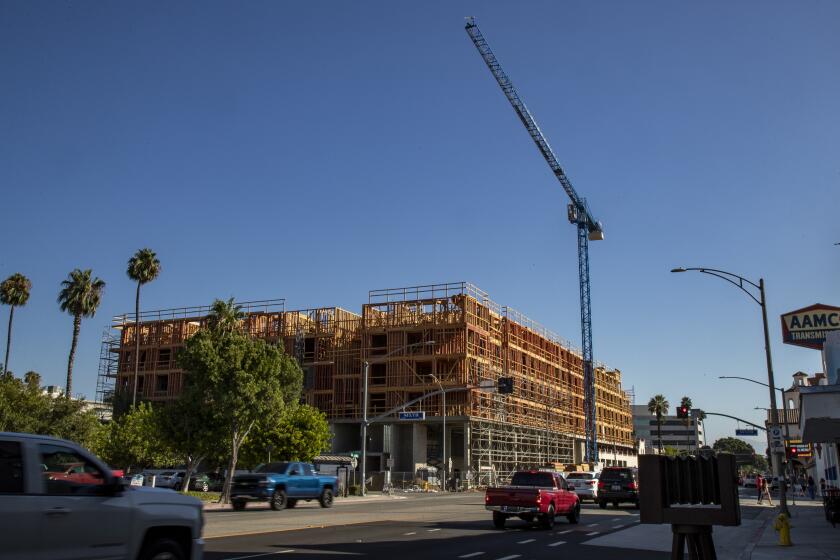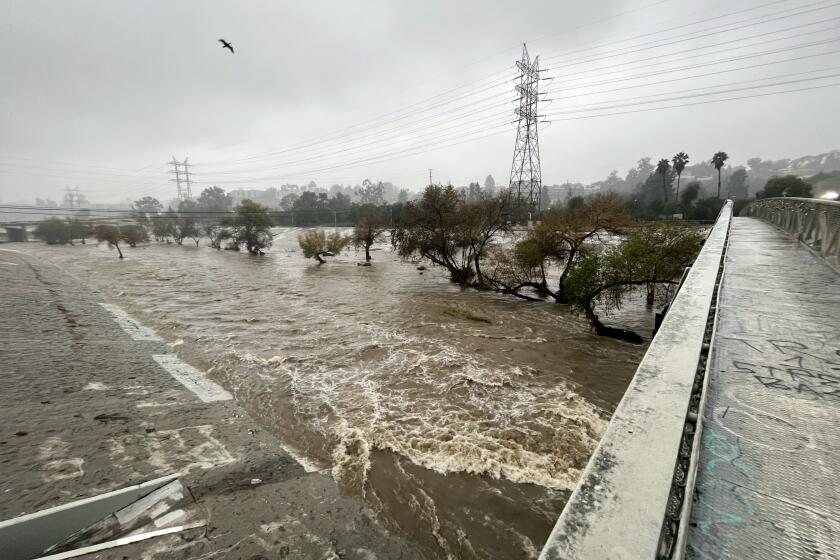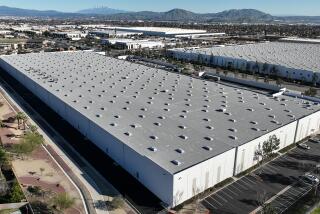Editorial: CEQA is too easily weaponized to block housing and slow environmental progress

Another year and lawmakers are again faced with the thorny but necessary job of reforming the California Environmental Quality Act, the landmark law that has improved countless construction projects. But CEQA lawsuits have also too often been used to thwart progress on the stateâs most pressing needs by stalling or blocking important projects.
In the latest example of CEQA run amok, a California appellate court is considering whether noisy college students are an environmental impact, akin to pollution or habitat loss, that should be addressed before UC Berkeley can build a new dormitory to ease its student housing shortage.
The case involves the universityâs plan to develop Peopleâs Park, a swath of open space owned by the university and claimed by protesters in 1969, with housing for 1,100 students and supportive housing for 125 homeless people, along with a clinic, public market and landscaped open space.
Neighborhood groups sued to block the project, arguing the university violated CEQA. In a tentative ruling issued in December, the 1st District Court of Appeal in San Francisco agreed the university failed to adequately study certain impacts, including noise. The ruling said that because college kids can be loud when talking, drinking and partying, the university should have studied and sought to reduce the âsocial noiseâ from future student residents.
Housing for homeless people canât be built fast enough in Los Angeles to fill the desperate need.
Berkeleyâs lawyers argue that noise from humans socializing shouldnât be considered an environmental impact, and itâs a dangerous precedent to require additional environmental analysis based on who is going to live in a housing development. Would housing for the elderly prompt the same analysis? Some CEQA experts warned the decision, if finalized, could give Not-in-My-Backyard litigants a powerful new tool to block housing and other development projects.
The tentative decision also takes aim at UC Berkeleyâs plan to expand enrollment and build more dorms nearby over the next 15 years, saying the university failed to study whether the long-term growth plan could have environmental impacts by increasing gentrification and homelessness. While these are real issues in the Bay Area, they havenât been considered environmental impacts under CEQA.
If the ruling becomes final, UC Berkeley could be penalized for not analyzing its impact on the local housing shortage and blocked from building dormitories to help address that shortage in the same decision. Thatâs one of the pitfalls of CEQA â the law only considers the possible negative effects from a project, without giving equal weight to its benefits or the consequences if the project isnât built. Yes, a dorm for 1,100 college students might generate noise in the neighborhood but it will create much-needed housing in a walkable, bikeable urban area with quality public transit, which is exactly where we should be building.
Assembly Bill 2011 would transform strip malls into housing and pay union-level wages to construction workers. Sounds like a win-win.
This, by the way, is Round 2 of the UC Berkeley CEQA saga. Last year the California Supreme Court ordered Berkeley to freeze enrollment because it hadnât properly analyzed the environmental impacts of admitting more students. The freeze would have forced the university to cut its 2022 class by one-third, but legislators and Gov. Gavin Newsom quickly passed a narrow CEQA exemption that lifted the enrollment cap.
Lawmakers are considering another CEQA exemption bill for UC Berkeley if the courts halt the Peopleâs Park dorm development.
And thatâs been the story of CEQA reform over the years. A CEQA case gums up a political priority and lawmakers rush to create an exemption or a fast track. Professional football stadiums, basketball arenas and corporate headquarters were among the first developments to get CEQA carve-outs. Legislators have increasingly passed exemptions for homeless and affordable developments, certain student housing projects, mixed-income housing in commercial areas and for bike, bus and transit projects.
But the exemptions can be narrow, piecemeal and not always enough to insulate important projects from being waylaid by CEQA challenges. Thatâs why broader CEQA reform is so desperately needed.
Angelenos are wondering why we arenât capturing this yearâs bounty from the sky. The reality is: We are. Slowly and steadily, the Los Angeles region is shoring up our future water resources.
CEQA itself is not the problem. The law was enacted more than 40 years ago as a way to inform, protect and empower the public by requiring developers to disclose the environmental effects of their projects and to reduce harm they may cause. The law has made many projects better. CEQA lawsuits have required warehouse projects in the Inland Empire to reduce neighborsâ exposure to diesel exhaust and forced developers building in high-fire-risk areas to make their projects safer.
But it has also been abused. Itâs too easy to tie up projects with costly and time-consuming lawsuits for reasons that have nothing to do with environmental protection. Organized labor groups have used the threat of CEQA lawsuits to force developers to hire unionized labor. Companies have filed lawsuits to block competition. Homeowners groups have used CEQA to stop construction or shrink the size of apartment complexes. Earlier this month, an oil company filed a CEQA lawsuit against Los Angeles, saying the city failed to do an environmental study of the effects of phasing out oil production.
While there is general agreement in Sacramento that CEQA should be reformed, there isnât the political will to get it done. There are too many stakeholders, particularly labor unions, that donât want to lose the leverage CEQA gives them and too few lawmakers willing to take on those interests. With major legislation unlikely, legal experts have urged Newsom and his administration to use their authority to draft clear, broad exemptions for urban infill development and clean-energy projects. This should be a natural next step for Newsom, whoâs been willing to wield executive authority to push his housing and climate goals.
California has so much work to do to make this state more affordable, equitable and sustainable. State leaders cannot allow CEQA to be used as an impediment to progress.
More to Read
A cure for the common opinion
Get thought-provoking perspectives with our weekly newsletter.
You may occasionally receive promotional content from the Los Angeles Times.












